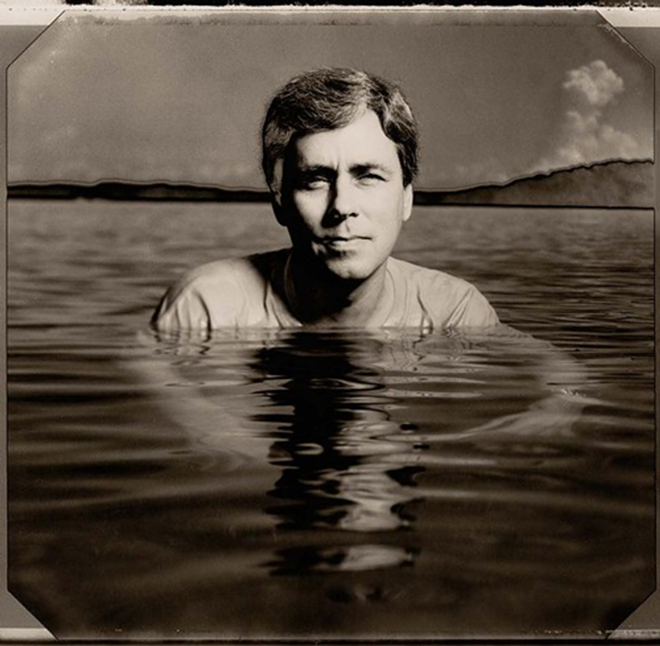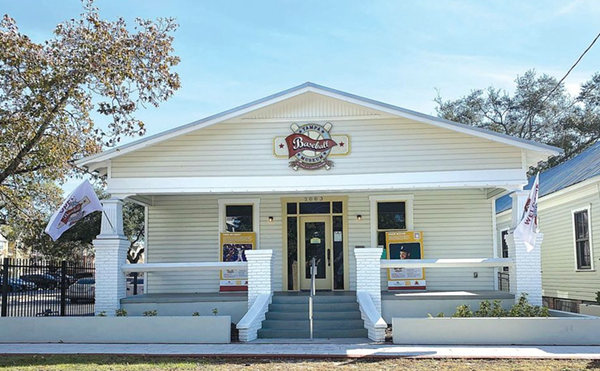Remember the late, great Richard Pryor? Onstage, he’d make those brilliant observations with a heaping helping of 10- and 12-letter words.
Then he’d show up on network television (you remember that, don’t you?) and do the same routines, but manage to stop just before uttering those words you couldn’t say on TV back then.
I was thinking of those deft performances while reading Carl Hiaasen’s new book, Skink — No Surrender (Knopf, $18.99). This is a book for “young adults,” but all that means is that Hiaasen stops short of some of the adult themes and grown-up mayhem in his mainstream novels.
Hiaasen’s never been one to stream together symphonic profanity in several movements, but characters in his grown-up novels do occasionally have sex — and sometimes these are cross-species relationships. (Who can forget the unfortunate baddie in Native Tongue who got fucked by a dolphin?)
Skink — No Surrender features one of the few recurring characters in Hiaasen’s adult novels — Clinton Tyree, the crazed renegade who once governed the state of Florida. Angered by the politic evils in Big Tally, he went underground, becoming the roadkill-eating eco-terrorist known as Skink.
This time out, Skink is helping a young boy named Richard find his missing cousin, a girl wooed away by an online sleaze. Skink becomes Richard’s eco-mentor, teaching him how to mess with those who defile Florida and its natural resources.
Hiaasen had been publishing his celebrated grown up books for a couple of decades — like clockwork, every two years — and most of them had an environmental theme where rebels such as Skink meted out justice on both the entrenched and the creeping assholery of the status quo.
Then Hiaasen began writing books for the demographic known as “young readers” — the wildly successful Hoot, Scat, Chomp and Flush. Skink - No Surrender, we’re told, is his first book for the “young adult” demo. I’m not sure I can tell the difference between these audiences. If you’re like me, it doesn’t matter if Hiaasen is writing for grownups, young readers, teens or iguanas. His books are always richly entertaining and morally satisfying.]
FELIX AND OSCAR OF THE MOVIES: Marlon Brando and John Wayne — now there’s an odd couple. But they had much more in common than you realized.
They’re both subjects of wonderful new biographies. John Wayne: The Life and Legend (Simon and Schuster, $32.50) by Scott Eyman of the Palm Beach Post, is a detailed and engrossing full-life portrait of one of the great stars in the history of Hollywood. Eyman’s book tells you the story you think you know, but gives so much detail and background that you will have to rethink your perceptions of John Wayne.
Yes, he was extremely conservative. Yes, he could be intransigent about the supposed communist influences in American culture. But up close and personal, he was always willing to listen to someone whose ideas clashed with his. He was unfailingly polite and deeply loyal. He admitted mistakes. He enjoyed the occasional joint. And he worried about money his whole life, living a modest non-movie star existence, primarily to provide a legacy for his children.
And he took his work much more seriously than you might think. He annotated scripts, rewrote dialogue, even stepped in as director on some films when the director of record took ill (loyal to friends, Wayne would often employed hard-on-their-luck colleagues and then carry them through the pictures). You come away from the book realizing that this man was as full of faults as an old shoe, but you can’t help but admire him, even love him.
John Wayne thought Marlon Brando was one of the great actors of his time (he was in awe of Brando’s transformation into his character in “The Godfather”) and one of the things they had in common was that attention to extreme detail with scripts.
Brando was a prolific writer of marginal notes and rewriter of dialogue. Like Wayne, he was determined to get inside the character, though both actors entered through different doors.
Brando’s Smile by Susan L. Mizruchi (W.W. Norton, $27.95) was written with access to Brando’s letters and his annotated scripts. Again we see the thought processes of a great actor on display. Both of these books are enriched by these dives into marginalia, to give us insight to the inner John Wayne and the inner Marlon Brando.
Both books will inspire you to create film retrospectives at your home theaters. Both men created so many great portrayals worth seeing again. To see Wayne’s arrival in “Stagecoach” (1939), so carefully choreographed by his mentor, director John Ford, is still thrilling. Tosee the elegiac final chapter by Ford and Wayne in “The Man Who Shot Liberty Valance” (1962) is equally thrilling.
And can we ever tire of Brando as Stanley Kowalski, Terry Malloy or Vito Corleone? Not around here. We have an annual screening of “The Godfather” trilogy in our family room.
Both of those actors, though different, are carved into a cinematic Mount Rushmore.
A former faculty member at the University of Florida, William McKeen now chairs the journalism department at Boston University. He is the author most recently of Mile Marker Zero, Outlaw Journalist and Homegrown in Florida .

















